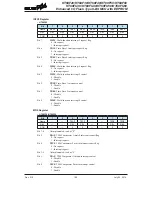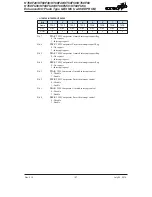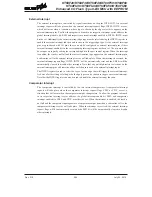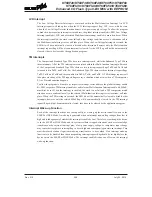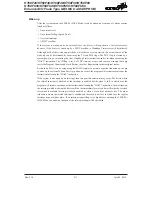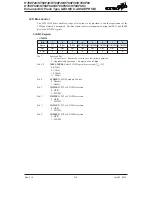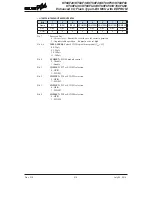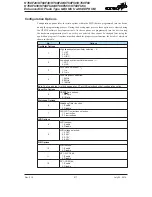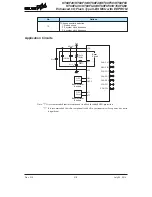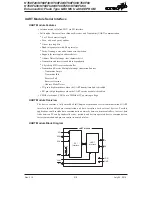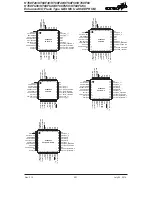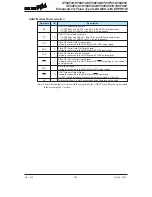
Rev. 2.10
206
���� 02� 201�
Rev. 2.10
207
���� 02� 201�
HT68F20/HT68F30/HT68F40/HT68F50/HT68F60
HT68FU30/HT68FU40/HT68FU50/HT68FU60
Enhanced I/O Flash Type 8-Bit MCU with EEPROM
HT68F20/HT68F30/HT68F40/HT68F50/HT68F60
HT68FU30/HT68FU40/HT68FU50/HT68FU60
Enhanced I/O Flash Type 8-Bit MCU with EEPROM
Serial Interface Module Interrupt
The Serial Interface Module Interrupt, also known as the SIM interrupt, is contained within the
Multi-function Interrupt. A SIM Interrupt request will take place when the SIM Interrupt request
flag, SIMF, is set, which occurs when a byte of data has been received or transmitted by the SIM
interface. To allow the program to branch to its respective interrupt vector address, the global
interrupt enable bit, EMI, and the Serial Interface Interrupt enable bit, SIME, and Muti-function
interrupt enable bits, must first be set. When the interrupt is enabled, the stack is not full and a byte
of data has been transmitted or received by the SIM interface, a subroutine call to the respective
Multi-function Interrupt vector, will take place. When the Serial Interface Interrupt is serviced, the
EMI bit will be automatically cleared to disable other interrupts, however only the Multi-function
interrupt request flag will be also automatically cleared. As the SIMF flag will not be automatically
cleared, it has to be cleared by the application program.
External Peripheral Interrupt
The External Peripheral Interrupt operates in a similar way to the external interrupt and is contained
within the Multi-function Interrupt. A Peripheral Interrupt request will take place when the External
Peripheral Interrupt request flag, XPF, is set, which occurs when a negative edge transition appears
on the PINT pin. To allow the program to branch to its respective interrupt vector address, the
global interrupt enable bit, EMI, external peripheral interrupt enable bit, XPE, and associated
Multi-function interrupt enable bit, must first be set. When the interrupt is enabled, the stack is not
full and a negative transition appears on the External Peripheral Interrupt pin, a subroutine call to
the respective Multi-function Interrupt, will take place. When the External Peripheral Interrupt is
serviced, the EMI bit will be automatically cleared to disable other interrupts, however only the
Multi-function interrupt request flag will be also automatically cleared.
As the XPF flag will not be automatically cleared, it has to be cleared by the application program.
The external peripheral interrupt pin is pin-shared with several other pins with different functions. It
must therefore be properly configured to enable it to operate as an External Peripheral Interrupt pin.
EEPROM Interrupt
The EEPROM Interrupt, is contained within the Multi-function Interrupt. An EEPROM Interrupt
request will take place when the EEPROM Interrupt request flag, DEF, is set, which occurs when an
EEPROM Write or Read cycle ends. To allow the program to branch to its respective interrupt vector
address, the global interrupt enable bit, EMI, EEPROM Interrupt enable bit, DEE, and associated
Multi-function interrupt enable bit, must first be set. When the interrupt is enabled, the stack is not
full and an EEPROM Write or Read cycle ends, a subroutine call to the respective Multi-function
Interrupt vector, will take place. When the EEPROM Interrupt is serviced, the EMI bit will be
automatically cleared to disable other interrupts, however only the Multi-function interrupt request
flag will be also automatically cleared. As the DEF flag will not be automatically cleared, it has to be
cleared by the application program.




